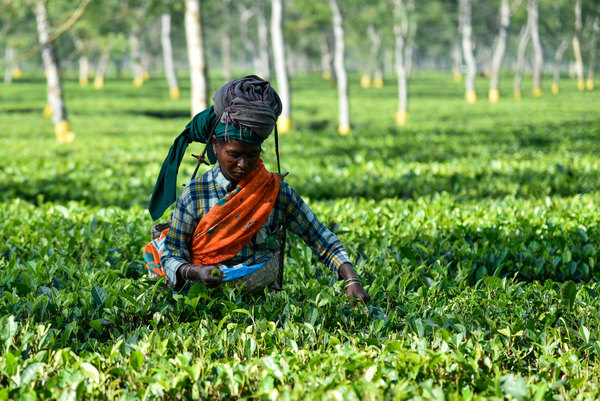Plantwise Breakfast Meeting at PBCRC Science Exchange
Join Trevor Nicholls and Michael Thompson from CABI for a breakfast presentation on the Plantwise programme at this year’s SX. Plantwise aims to support Millennium Development Goals No.1 (Eradicate extreme poverty and hunger) and No.7 (Ensure environmental sustainability), and their successors in the post-2015 UN development agenda, which are anticipated to be even more…
Calling tomorrow’s leaders: Apply today to earn a sustainable agriculture degree from CABI
CABI is on the lookout for students to join a crop management degree programme aimed at tackling food insecurity around the world and helping to feed the growing global population. Scholarship opportunities are available to qualified individuals who work with the Plantwise programme activities in their countries. With the population estimated to reach…
Sharing open data in agriculture and nutrition to help make decisions
GODAN, in collaboration with the Open Data Institute, yesterday launched a discussion paper: How can we improve agriculture, food and nutrition with open data? at the 3rd International Open Data Conference in Ottawa (IODC). The paper highlights how open data is already making a difference in the agriculture and nutrition sectors. CABI is a partner…
New report highlights link between forests, farms and food security
With the global population estimated to reach 9 billion by 2050, there has been much debate around the issues of nutrition and food security. Amid these concerns, a report published on May 6 by the International Union of Forest Research Organizations (IUFRO), calls for greater consideration of the use of forests as a food source as…
Health & Wellness: making a drama out of public health
Helping writers provide accurate health information in TV medical dramas delivers entertainment and added benefits of increased health (medical) awareness & wellness to the population. Stephen McGann’s essay (Journal of the Royal Society of Medicine) describes the steps taken by the writers, production team and actors of TV medical drama, Call the Midwife, to ensure medical accuracy and authenticity. Though set in the 1950s, he demonstrates that the series has raised health awareness in populations (health promotion): in the UK (diphtheria) and in Bangladesh, by providing advice on how to depict authentic birth scenes and show safe maternal health practices.
Ebola – the not so new virus
Ebola, now largely confined to Sierra Leone, Liberia and Guinea claimed more than 9300 lives in West Africa in a year. I have selected key facts & insights from February’s national symposium “Ebola: The 21st century plague?" [Royal Society of Medicine, London, UK], held by international experts handling the epidemic. Covering the history of the disease, lessons learnt from 2014, and what strategies are in place for preventing future outbreaks, there was also an explanation finally as to why a rural outbreak became a regional urban epidemic, and an understanding of the complexity of medical volunteering and running ebola treatment centres.
Milk Quotas in European Union to Be Abolished after 31 Years
By Miroslav Djuric, DVM, Editor of Dairy Science Abstracts Milk quotas in the European Union (EU) will be abolished from the 1 April 2015, exactly 31 years after its introduction. The Dairy Produce Quota Regulations were introduced by the European Economic Community (EEC) on the 2 April 1984 and were originally due to run until…
E-Learning Course on Bioinformatics of Animal Viruses
Nucleotide sequencing has become a very popular technique for diagnosis and characterization of pathogens and is accessible to most veterinary practices. A nucleotide sequence provides information on the nature of the pathogen, its source and its main characteristics such as strain, virulence and drug resistance. Bioinformatics provides tools to gather, store, and analyse these biological…
Animal Genetic Research Increasingly Focuses on Medical and Pharmaceutical Markets rather than on Food Production
According to a recent report by the World Intellectual Property Organization (WIPO), patenting activity in the field of animal genetics is focusing on medical and pharmaceutical markets, rather than animal products for human nutrition. A vast amount of scientific literature on animal genetic resources, transgenic animals and patents in this field is available in the CAB Direct database. The literature, which originates from more than 150 countries and is published in over 50 languages, is translated and indexed by CABI’s specialists for easy searching. The CAB Direct database currently contains more than 23,000 references with abstracts on animal genetic resources.
African Swine Fever on the Move – China, the EU and FAO Assessing Preparedness in East and Southeast Asia, the Region with >50% of the World Pig Population
By M Djuric, DVM African Swine Fever (ASF) continues to spread in traditionally endemic sub-Saharan Africa, but it is also expanding into previously ASF-free countries with a new front opening up along the Caucasus and Eastern Europe. The risk of ASF entering China is of particular concern since the country keeps almost half of the…


